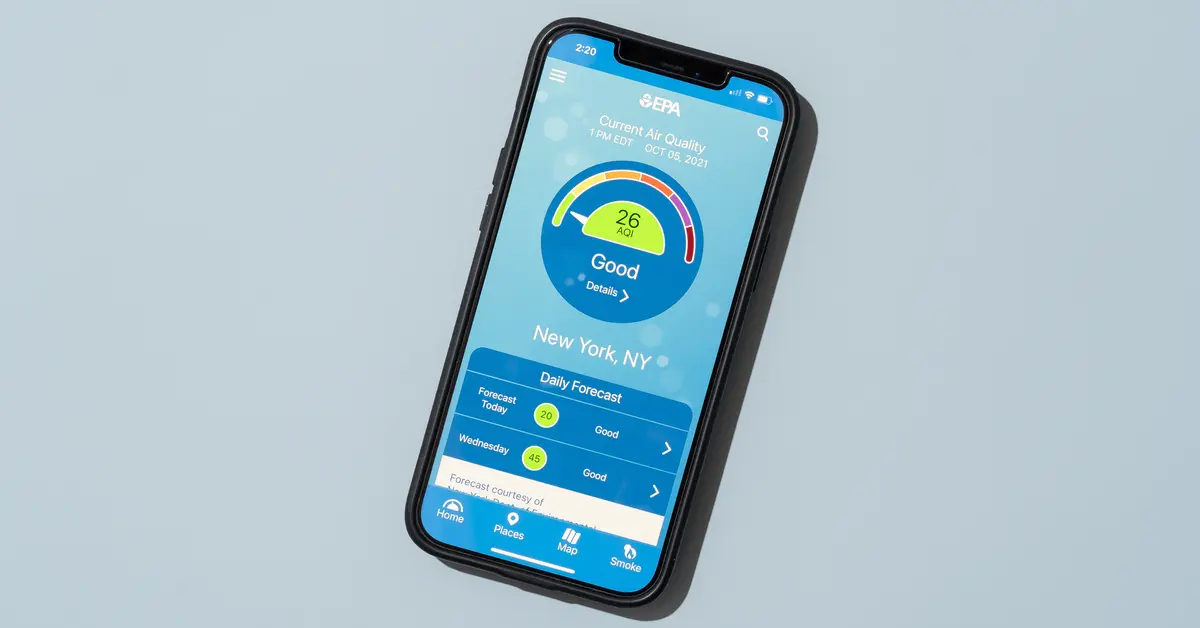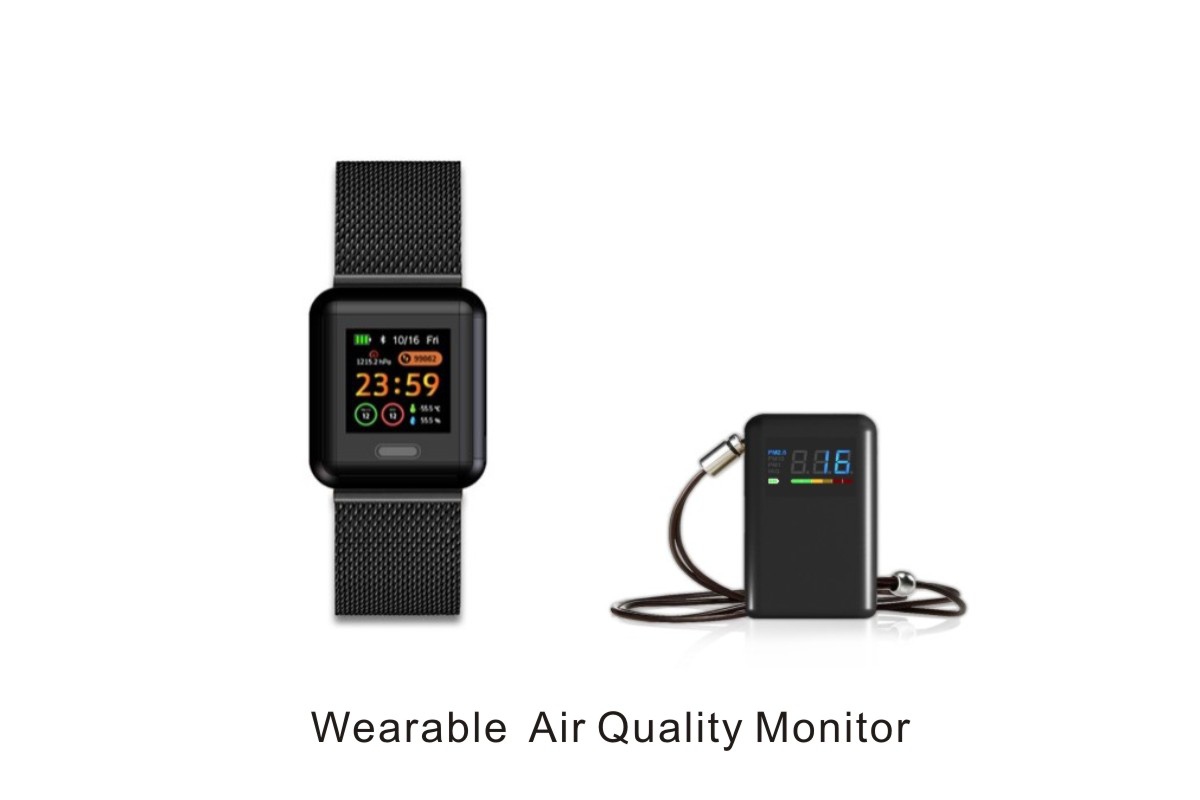Personal Air Quality Trackers: Breathe Easier with Wearable Tech
From urban commuters to outdoor enthusiasts, personal air quality trackers offer a proactive approach to safeguarding our respiratory health in an increasingly polluted world.

Introduction

In an age where environmental concerns are at the forefront of public consciousness, the development of personal air quality trackers represents a significant advancement in wearable technology. These innovative devices empower individuals to monitor and manage their exposure to air pollutants in real-time, providing invaluable insights into the quality of the air we breathe. From urban commuters to outdoor enthusiasts, personal air quality trackers offer a proactive approach to safeguarding our respiratory health in an increasingly polluted world.
The Need for Air Quality Monitoring
Rising Air Pollution Levels
Air pollution poses a significant threat to public health, with pollutants such as particulate matter, nitrogen dioxide, and volatile organic compounds (VOCs) contributing to respiratory illnesses and other health problems. As urbanization and industrialization continue to escalate, the need for accurate and accessible air quality monitoring solutions becomes more pressing.
Personalized Health Insights
Traditional air quality monitoring stations provide valuable data on ambient air quality, but they may not capture localized variations or individual exposure levels. Personal air quality trackers fill this gap by offering personalized insights tailored to the wearer's specific environment and activities, empowering users to make informed decisions about their health and well-being.
The Development of Wearable Air Quality Trackers
Integration of Sensor Technology
Personal air quality trackers leverage advanced sensor technology to detect and measure air pollutants in real-time. Compact sensors for particulate matter, gases, and volatile compounds are integrated into wearable devices, allowing users to monitor their exposure levels throughout the day.
Real-Time Data Reporting
One of the key features of wearable air quality trackers is their ability to provide real-time data reporting. Through wireless connectivity and smartphone applications, users can access up-to-the-minute information about air quality metrics such as PM2.5 levels, ozone concentrations, and air quality indices, enabling them to take immediate action to mitigate exposure.
Benefits of Personal Air Quality Trackers
Health Awareness
Personal air quality trackers raise awareness about the impact of air pollution on individual health, empowering users to make informed lifestyle choices. By monitoring their exposure levels and correlating them with symptoms such as respiratory irritation or fatigue, individuals can identify patterns and take proactive measures to protect their health.
Environmental Advocacy
In addition to promoting personal health and well-being, wearable air quality trackers also serve as tools for environmental advocacy. By crowdsourcing air quality data from users around the world, these devices contribute to a collective understanding of air pollution trends and hotspots, informing policy decisions and driving initiatives to improve air quality.
The Future of Air Quality Monitoring
Technological Advancements
As sensor technology continues to advance, the capabilities of personal air quality trackers will only expand. Future iterations may incorporate additional sensors for detecting a wider range of pollutants, as well as features such as predictive analytics and personalized health recommendations.
Integration with Smart Cities
Personal air quality trackers have the potential to integrate seamlessly with smart city infrastructure, providing real-time data feeds that inform urban planning and public health initiatives. By creating interconnected networks of sensors, cities can monitor air quality at a granular level and implement targeted interventions to reduce pollution levels.
FAQs (Frequently Asked Questions)
Q: Are personal air quality trackers accurate?
A: Personal air quality trackers undergo rigorous testing to ensure accuracy and reliability, but their performance may vary depending on factors such as sensor calibration and environmental conditions.
Q: Can personal air quality trackers detect all types of pollutants?
A: Personal air quality trackers are designed to detect common air pollutants such as particulate matter, gases, and volatile organic compounds (VOCs), but their capabilities may vary depending on the specific sensors used.
Q: Are personal air quality trackers comfortable to wear?
A: Yes, personal air quality trackers are designed to be lightweight, compact, and comfortable for all-day wear, ensuring minimal disruption to daily activities.
Q: How long does the battery last on personal air quality trackers?
A: Battery life varies depending on the specific device and usage patterns, but most personal air quality trackers offer several days to weeks of battery life on a single charge.
Q: Can personal air quality trackers be used indoors?
A: Yes, personal air quality trackers can be used indoors to monitor indoor air quality levels and identify potential sources of pollution such as cooking fumes or household chemicals.
Q: Are personal air quality trackers waterproof?
A: Some personal air quality trackers may be water-resistant or waterproof, but users should check the manufacturer's specifications for details on water resistance ratings and usage guidelines.
Conclusion
Personal air quality trackers represent a significant step forward in empowering individuals to take control of their respiratory health. By providing real-time data on air pollution levels and offering personalized insights, these wearable devices offer a proactive approach to mitigating the effects of air pollution and promoting overall well-being. As technology continues to evolve, personal air quality trackers hold the promise of creating healthier, more sustainable communities for generations to come.